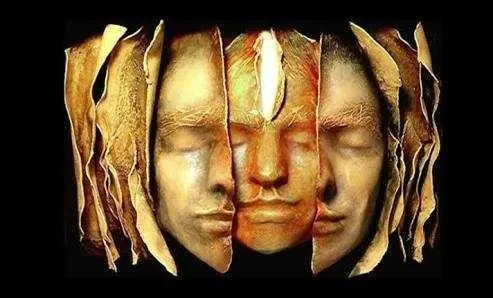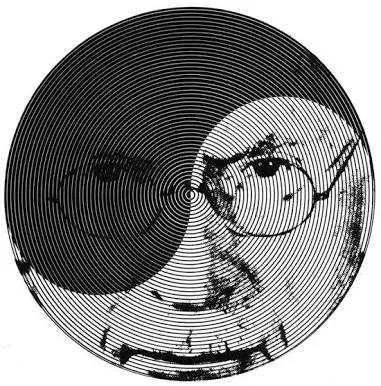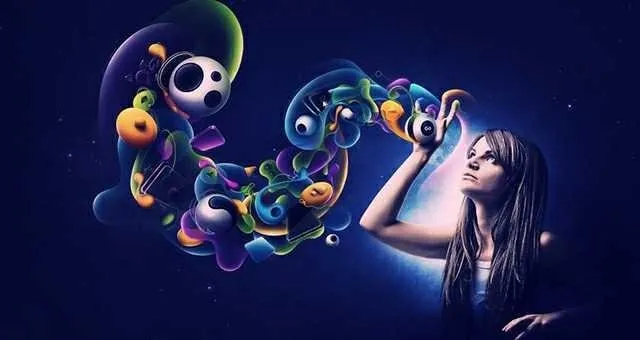
Archetype concept and features
Archetypes are existential codes that process each person's DNA and continue to inherit the new generation. The word "akretip" was produced from the Greek "arkhetypos". The initial model also comes to mean the first instance. A universal concept and situation is the first image, character, or pattern that can be counted as continuity. It constitutes the collective subconscious.
Archetypes take the formal elements of mythology. Like the Greek mythology, each of the Olympos gods has a personality that can be considered universal (it can be said that it has two persons in fact because each character is a good and bad version). These features are still used today in literary and artistic works, in character creations and surveys used in movies and advertisements. In fact, we can think of archetypal figures, whose source is mythology, as the starting point of stereotypes.
Rungun's "archetypical" connotation in the world of psychology is defined in the psychology literature as structures that organize our perception, regulate, modify and develop the contents of consciousness.
The archetypes that Jungun dominates, also called mythological or primitive figures, have been formed as a result of the experiences of birth, death, sexuality, finding a match, feeding, defending against danger.
Archetypically, when we consider it from this aspect, it is an untrained tendency to experience something in a certain way. A mark of thousands of years before an archetype can emerge in the dreams of today's people. Thousands of year-old mother images allow a newborn baby to perceive this archetype apart from common consciousness and to perceive her mother with the influence of this imagen.
All archetypes have an impact on human psychology. The level of this activity varies depending on the overall and overall flow of content used in the archetype.
Before moving on to the characteristics of these aqueducts and how they are affected, It would be helpful to understand George Boeree's reading of the story:
! [Image] ( )
)
Jung's theory divides the human mind into 3 divisions. The eastern part of these is Jung's self-conscious mentality. The second part closely related to this is personal consciousness and includes everything that is not conscious at the moment but can reach consciousness level. Your subconscious is like a subconscious figure that many people perceive; the memories that can bring to mind easily, and others that are suppressed. But instincts, unlike Freud's theory, are beyond this. Chapter 3, which Jung adds to his theory of the human mind, also distinguishes his theory from others in a coherent way: the collective unconscious. We may call it spiritual inheritance. This is where all the experiences we have as a species are stored; we are all born with this knowledge. Nevertheless, we can never be directly aware of this. This affects all our experiences and behaviors, the most emotional ones. But we can only understand it indirectly by seeing its effects.
There are some experiences that show the effects of collective subconscious much more clearly than others: all of the experiences, such as Love, deja vu (the feeling that we have experienced before) and the meaning of some symbols and some myths, can all be considered as sudden intersection with our Collective subconscious . In the broader sense, the creative experiences shared by artists and musicians all over the world and at all times, the mental experiences of mystics in all languages, or the parallels in dreams, fantasies, mythologies, fairy tales and literature are all collective conscious.
This is a beautiful and recent experience of approaching death with a highly controversial example. A lot of people with many different cultural backgrounds turned to life after being so close to death talked about very similar experiences; they have spoken of a long tunneled eunuch with a brilliant light on their tip, and the disappointment of their lost relatives or religious figures waiting for them and returning to their bodies when they are living this happy moment, as they clearly see their bodies and the events surrounding them as they leave their bodies. In the past we were all made to experience death in this way.

WHAT WILL ARCETIERS HAVE?
The collective subconscious items are called archetypes -models. Jong also called them Dominant, mythological or primitive figures. An archetype is an untrained tendency to experience something in a certain way.
Archetype does not have its own form, but it plays a role of "regulatory principle" on what we see or do. The function is the same as that of the instincts in Freud's theory:he does not know what he wants. Yet there is a vague desire to be satisfied with certain things and not with some. The growing child, with experience, starts to ask for something much more pronounced in openness; a bottle, a cookie, or a mushy pizza. An archetype is similar to an oddball on the street; we can only understand what it is there with the light and the light it pours into it.
A) MOTHER ARCHITECTURE
All of our horses had a mans. We grew up in an environment where either a mother or a figurine replaced the mother. We could not live without the independence of the person who feeds us while Weeping and Waiting. This results in what we "designed" to reflect our evolutionary environment: a mother came to the world at will, ready to look for, recognize, and deal with it. That is why our mother archetype is a certain kind of relationship, an innate ability that enables us to recognize the relation of "motherhood". Jung tells us that this is a little abstract and that we are inclined to reflect this archetypal on the world, often on a certain person - mostly our own mothers. Even if there is no person to reflect this archetype, we try to personalize this archetype into a mythological "Roman" character. This character symbolizes the archetype.
The mother's archetype is symbolized by the Primitive Mother or Mother Earth in the mythology; In Western beliefs, with Eve and Mary and more personal symbols such as the church, the Nation or a forest or the Ocean. According to Jung, a person who can not meet the needs of the mother's archetype in her mind can not be met by her true mother, she will tend to seek peace in the Church or to identify herself with her motherland, examine Mary's main figure, or choose life at sea.
B) MANA
First, the water must be understood that these archetypes are not biological like Freud's instincts. It is more of a spiritual will. For example, if you see long objects in our dream, Freud can make them interpretations of phallus and finally the sexy symbol. But jung has a far different perspective. According to him, even the dreams that we see clearly a penis may point to different things than the need for unexplored sex.
It is doubtful whether phallic symbols in primitive societies are directly related to sex. They usually symbolize the meaning, that is, spiritual power. These symbols are invoked at special times to fertilize the land, to increase crops or fish, or to improve one. The connection between penis and power, sage and seed, fertilizer and fertility has been understood by many cultures.
C) SHADOW
Sex and life instincts are also generally represented in the Jung system. They are a part of the scorpion that jung gives the shadow name. The primitive humanoid we are not aware of ourselves is that our needs are limited to the survival and reproduction instincts, a part of our "animal" past.
The shadow is the dark face of the egon; the potential evil is usually stored here. In reality there is no flesh of the shadow; it is not good or bad, just like animals. An animal has the abilities of compassion and love for its offspring and brutally killing its prey for food. But he does not choose to do both. He will do what he wants. it is "innocent". But from our humane point of view, the world of animals is seen as savage and cruel, so the shadow becomes a garbage bin where we can not confess our personality. The symbols of the shadow are the serpent, the dragon, the monsters and the devils. The shadow is often a cave or a pool full of water; they wait for us at the entrance of collective consciousness. You will soon realize that you are fighting with the devil in your dreams that you are the only ones that you fight.
D) PERSONA
The persona represents our social vision. The Persona word is associated with the words person-personality and personality-personality, and comes from the word Mask, which means a mask in Latin. Persona is the mask you wear before you show yourself to the outside world. Even if we start an archetype, we will see that we are the most distant from the collective Consciousness since we realized it.
This is the "best imagination" that we all want to give while the society fulfills the roles we want from it. But it could also be the false "image" we use to direct people's thoughts and behaviors. The worst thing is that we can think of it as our original birth. Sometimes we believe it is how we want to be.
E) ANIMAL AND ANIMUS
The female or man we have to play in life forms part of the persona of our personality. For many people, this role is determined by their physical sex. But jung, like Freud, Adler and others, felt that we had a bisexual nature. When we started our life as a fetus, we had undifferentiated sexual organs; they are only in time and various disdainunder the influence of monlar men have taken the status outside. When we started our social life as a baby in the same way, neither the male nor the female were social. But almost simultaneously - with things like pink and blue ribbons - what we have become is the influence of society, which slowly turns us into man or woman.
In all societies, expectations for male and female roles are different; it is often based on our different roles in production, but often also includes many traditional details. In today's society, we still bear the traces of these traditional expectations. It is expected that women should still be more affectionate and less aggressive, while men should still be strong and emotionally robust. According to Jung, these expectations show that we have the potential to improve our potential.
Anime is the collective conscious subconscious of men and animos is the collective conscious subconscious of women. Together they are called "syzygy". The moment can be personified as a young girl or a witch or Mother Earth acting instantaneously and intuitively. It is often associated with deep emotionality and the power of life. Animos can be personified as an elderly, information man, a magician, or often multiple men, and this figure is generally logical, realistic, and even controversial.
It is the archetyppe that enables us to communicate with the collective subconscious in the general sense of anime or animos. At the same time love is also responsible for most of our lives. As we are told in the legend of Ancient Greece, the opposite sex is our other source, the other half of which the gods have taken from us. When we're in love with the first sight, it's like meeting someone who fits well with the archetype of anima or animus in our minds.
Thank you for reading.